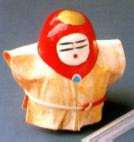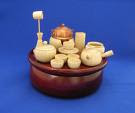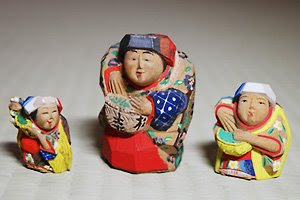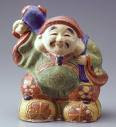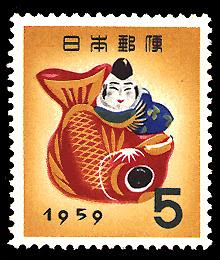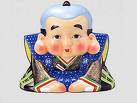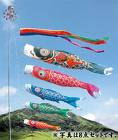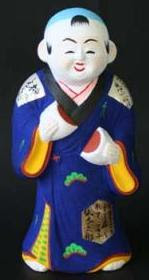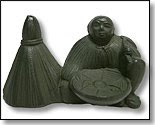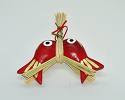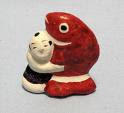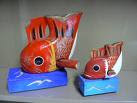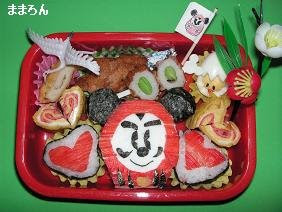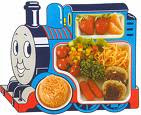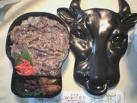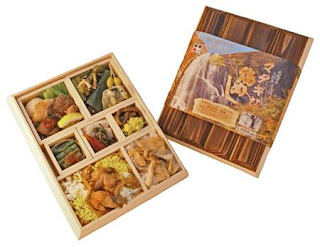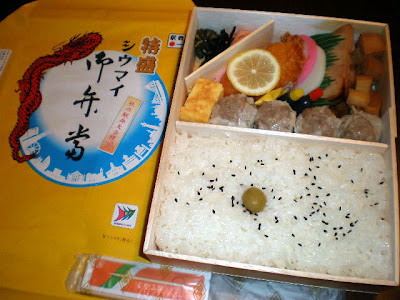[ . BACK to WORLDKIGO TOP . ]
::::::::::::::::::::::::::::::::::::::::::::::::::::::::::::::::::::::::::::::::::::::::::::::::::::
The Japanese Vegetable Saijiki
野菜歳時記
:::::::::::::::::::::::::::::::::::::::::::::::::::::::::::::::::::::::::::::::::::::::::::::::::::::
Please use your browser to find a word!
:::::::::::::::::::::::::::::::::::::::::::::::::::::::::::::::::::::::::::::::::::::::::::::::::::::
Vegetables of Spring ... haru no yasai 春の野菜
***** Location: Japan
***** Season: Spring
***** Category: Plants
*****************************
Explanation
The Haiku SPRING starts on February 4, according to the Asian lunar calendar.
Spring is the time when a lot of sprouts and buds appear on the table or are made into preserves and pickles. I made an extra page with the pickles of spring, 春の漬物.
Tsukemono (Pickles)
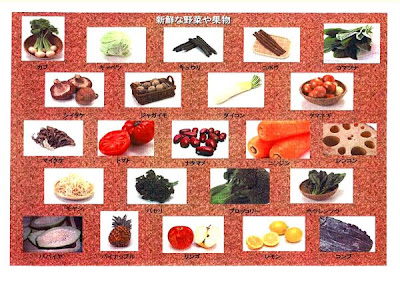
:::::::::::::::::::::::::::::::::::::::::::::::::::::::::::::::::::::::::::::::::::::::::::::::::::::
Early Spring
arrowhead 慈姑 (くわい) kuwai
shiro kuwai 白慈姑(しろぐわい)white arrowhead
ao kuwai 青慈姑(あおぐわい)green arrowhead
kuwai no me 慈姑の芽(くわいのめ) arrowhead buds
Sagittaria trifolia var. edulis
Its leaves look like a howe KUWA, hence the name. Since it is like a potato, it was first called kuwai imo 慈姑芋 ... kuwai.
Since its buds sprout quite visible, it is an auspicious food for "me ga deru", to have good luch (eyes coming out). It can be cut with six corners to resemble a little bell.
. . . CLICK here for Photos !
Pfeilkraut
digging for arrowhead 慈姑掘る (くわいほる) kuwai horu
kigo for all spring
Suita kuwai 吹田くわい arrowhead from Suita town, Osaka
kuroguwai 烏芋 (くろぐわい) "black kuwai"
goi ごい、egu imo えぐいも、kuwaizuru くわいずる
leafy "february leaf" 如月菜 (きさらぎな) kisaragi na
..... kisaragina 二月菜(きさらぎな), タアサイ
Mibu-leaf 壬生菜 (みぶな) mibuna
..... itona 糸菜(いとな) "thread leaf"
. . . CLICK here for Photos !
potato seedlings 種芋 (たねいも) tane-imo
tane imo 種薯(たねいも)、imo tane 芋種(いもたね)
imo no me 芋の芽(いものめ)potato sprouts
imonae 藷苗(いもなえ) potato seedlings
potherb mustard 水菜 (みずな) mizuna
uwabamisoo 蟒草 (うわばみそう) "large snake plant"
..... kyoona 京菜(きょうな) "Kyoto leaf"
. . . CLICK here for Photos !
Mizuna-Wildnessel
Xiu Cai, Kyona, Japanese Mustard, Japanese Greens, California Peppergrass, Spider Mustard
The taste of mizuna has been described as a "piquant, mild peppery flavor...slightly spicy, but less so than arugula."Mizuna makes an excellent salad green, and is frequently found in mesclun.It is also used in stir-frys, soups, and nabemono.
© More in the WIKIPEDIA !
Wildnesselart: Elatostema umbellatum.
spinach
spinach 菠薐草 (ほうれんそう, ほうれん草) hoorensoo, horenso
Spinat
:::::::::::::::::::::::::::::::::::::::::::::::::::::::::::::::::::::::::::::::::::::::::::::::::::::
Mid-Spring
Aralia 五加飯 (うこぎ) ukogi
Fatsia japonica blossoms (yatsude no hana) Japanese Aralia
Chinese leek, garlic chives 韮 (にら)
kamira かみら、mira みら、futamoji ふたもじ
. . . CLICK here for Photos !
chives 胡葱 (あさつき) asatsuki
itonegi 糸葱(いとねぎ)、senbon wakegi 千本分葱(せんぼんわけぎ)
senbuki せんぶき
garlic 蒜 (にんにく) ninniku
葫(にんにく)、hiru ひる、
big garlic 大蒜(おおにんにく) oo ninniku
Ninniku Garlic
"Horsetail" horsetail 土筆和(つくし) tsukushi
mountain pepper bark 山椒の皮 (さんしょうのかわ) Sanshoo no kawa
bark of the mountain pepper
rape-like "nightingale leaf" 鶯菜 (うぐいすな ) uguisuna
also like komatsuna
radish in spring 春大根 (はるだいこん) haru daikon
sangatsu daikon 三月大根(さんがつだいこん)
nawashiro daikon 苗代大根(なわしろだいこん)
shitagsu daikon 四月大根(しがつだいこん)
Starwort 嫁菜 (よめな)Yomena
Wolfberry 枸杞 (くこ) kuko
:::::::::::::::::::::::::::::::::::::::::::::::::::::::::::::::::::::::::::::::::::::::::::::::::::::
Late Spring
asparagus アスパラガス asuparagasu, asupara
matsuba udo 松葉独活(まつばうど), matsuba udo 石刀柏(まつばうど), seiyoo udo 西洋独活(せいよううど), oranda kiji kakushi オランダ雉隠し(おらんだきじかくし)
Spargel
beans blossoms 豆の花 (まめのはな) mame no hana
..... soramame no hana 蚕豆の花(そらまめのはな) broad beans blossoms
..... endoo no hana 豌豆の花 (えんどうのはな) blossoms of shell peas
Pisum sativum
leek blossoms 葱坊主 (ねぎぼうず) negi boozu
..... negi no hana 葱の花(ねぎのはな)
..... negi no gibo 葱の擬宝(ねぎのぎぼ)
Leek (naganegi) green onions, scallion, porree Japan
"march leaf" 三月菜 (さんがつな) sangatsuna
Mugwort よもぎ (艾蓬, 蓬 ヨモギ) yomogi
myooga stems 茗荷竹 (みょうがたけ) myoogatake
Myoga Ginger (myooga) 茗荷 (みょうが). Zingi-Ingwer
suiitopii スイートピー
sweet pea, Wicke
kakoo rensoo 麝香連理草(じゃこうれんりそう)
jakoo endoo 、麝香豌豆(じゃこうえんどう)
nioi endoo におい豌豆(においえんどう)fragrant endo
Lathyrus odoratus
radish blossoms 大根の花 (だいこんのはな) daikon no hana
..... hana daikon 花大根(はなだいこ)
Radish (daikon) Japan.
Rapeseed blossoms (na no hana) Japan
Spikenard, Japanese spikenard 独活(うど) udo
. . .
moyashi udo もやし独活(もやしうど)sprouts of spikenard and more moyashi
sprouting vegetables 茎立 (くくたち) kukitachi
..... kukidachi くきだち
..... kukitachina 茎立菜 (くきたちな)
..... くくたち菜(くくたちな), okuna 晩菜(おくな)
Wasabi, Japanese horseradish わさび、山葵.
Wasabia japonica
warabi 蕨汁(わらび)bracken
zenmai ぜんまい飯(ぜんまい) zenmai fern
:::::::::::::::::::::::::::::::::::::::::::::::::::::::::::::::::::::::::::::::::::::::::::::::::::::
All Spring
brown mustard 芥菜 (からしな) karashina
..... 芥子菜(からしな), nagarashi ながらし
aokarashi 青芥(あおがらし)
karashina 芥菜(からしな)、菜芥(ながらし)
Brassica juncea Czern. et Coss
From China, introduced in the Heian period. Different types in various regions.
It has a strong hot taste.
. . . CLICK here for Photos !
Senf
garland chrysanthemum 春菊 shungiku "spring chrysanthemum"
Chrysanthemum coronarium
Mutterkraut
honewort, mitsuba honewort 三葉芹 (みつばぜり) mitsuba seri
mitsuba みつば
Cryptotaenia japonica. Added to many soups and salads.
. . . CLICK here for Photos !
Dreiblätterkraut
lettuce 萵苣 (ちしゃ) chisha
chisa ちさ、kakijisha 掻ぢしゃ(かきぢしゃ), tamajisha 玉ぢしゃ(たまぢしゃ), retasu レタス、saradana, sarada-na サラダ菜(さらだな)
The use of lettuce for salad became popular in Japan after 1970. There are more than 200 different types of lettuce grown.
The Japanese word CHISHA goes back to the stem of the lettuce, when cut, some whitish liquor is coming out, "plant producing milk" 乳草 chi gusa .. chisha.

koogen retasu 高原レタス lettuce from the highlands, best in July and August
Kawakami village 川上村 in Nagano produces the most lettuce in Japan. They are grown on white multisheets and harvesting starts at 4 in the morning, to bring them to the markets in town via truckloads.
hanimuun sarada ハニムーンサラダ
"honeymoon salad"
made only of salad leaves.
... Lettuce only ... let us only ...
Salat, Salatkopf
leafy spring vegetables 春菜 (はるな) haruna
:::::::::::::::::::::::::::::::::::::::::::::::::::::::::::::::::::::::::::::::::::::::::::::::::::::
Japanese parcely 芹 seri, dropwort
Oenanthe javanica
. . . CLICK here for Photos !
Brunnenkresse, Rebendolde, Japanisches Petersilie
seri tsumi 芹摘(せりつみ)picking Japanese parcely
serita 芹田(せりた)field with J. parcely
seri no mizu 芹の水(せりのみず)water flowing through a J.parcely field
taseri 田芹(たぜり)J. Parcely from a field (farmed types)
... hataseri 畑芹(はたぜり)
nezeri 根芹(ねぜり)root of the J. parcely
mizuzeri 水芹(みずぜり)water dropwort
shirozeri 白芹(しろぜり)white J. parcely
dokuseri 毒芹(どくぜり)poisonous J. parcely
oozeri 大芹(おおぜり)large j.parcely
ekisaizeri 益斎芹(えきさいぜり)
Apodicarpum ikenoi Makino
sawazeri 沢芹(さわぜり)J. parcely in a swamp
... numazeri 沼芹(ぬまぜり)
nejirogusa 根白草(ねじろぐさ)plant with white roots
tsumimashigusa つみまし草(つみましぐさ)
Haru no Nanakusa 春の七草 Seven Herbs of Spring
Japanese parsley or dropwort (seri せり),
Shepherd's purse, (nazuna 薺),
cottonweed (gogyo 御行, 五形、御形),
chickweed (hakobera はこべら),
Buddha's Seat(hotoke no za 仏の座) Lapsana apogonoides,
Japanese Turnip (suzuna すずな),
Long Radish (daikon))suzushiro すずしろ.
seri is well loved in many hodgepodge dishes in winter too. It is grown in houses (for example in the area for Miseki seri 三関セリ) in Northern Japan. It is harvested with its roots, which are long and white and also eaten after removing all the earth.
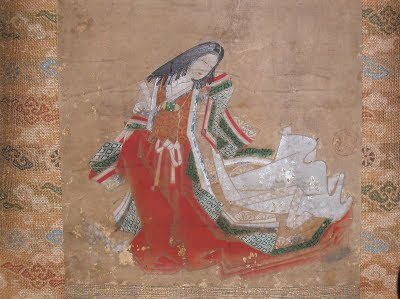
There is an old story about a poor girl picking dropwort in winter, because her mother was ill and she could not afford better medicine. Prince Shotoku saw her, fell in love with her and made her his princess, hence the "dropwort picking princess" , Seritsumi Hime 芹摘姫. / Kashiwate Hime 膳夫姫.
膳臣傾子(かしわでのおみかたぶこ)
Story from the temple Kashiwate dera 膳夫寺 (かしわてでら), Nara.
Matsuo Basho in the year Genroku 6, when he was 50 years old.
When he visited some pupils and they treated him to this dish:
(The Seri is used to cover the meat taste of the duck meat. It was picked at the nearby irrigation pond of the foothills, which was still covered with thin ice.)
芹焼や裾輪の田井の初氷
seriyaki ya susowa no ta-i no hatsu goori / seri yaki
parsley baked duck -
first ice around the irrigation pond
at the mountain's foot
Written in 元禄6年, Basho age 50
He had been treated to some of this food by his pupils around Shokushi 濁子.
. . . . .
悲しまんや墨子芹焼を見ても猶
kanashiman ya Bokushi seriyaki o mite mo nao
does he grieve
the poet when he sees parsley
grow dark with cooking
Tr. Reichhold
Reichhold's comment:
"'Seri' is the 'water dropwort' or 'Japanese parsley' ('Oenanthe javanica'). It was baked with duck or pheasant in a soy sauce and vinegar marinade. The dish of cooked parsley and meat looked like the first ice on an irrigation pond."
seri no meshi 芹の飯
rice with dropwort
- Basho Haiku about Food 松尾芭蕉 -

seri no hana 芹の花 (せりのはな)
dropwort flowers
kigo for mid-summer
. dropwort in winter 冬芹(ふゆぜり) fuyuzeri
kanzeri 寒芹 (かんぜり) dropwort in the cold
. Fern (shida) and seri .
*****************************
Things found on the way
*****************************
HAIKU
 ぜんまいののの字ばかりの寂光土
ぜんまいののの字ばかりの寂光土
zenmai no no no ji bakari no jakkoodo
the zenmai fern
is all round and round (like the character の ) -
Jakko Paradise
Kawabata Boosha 川端茅舎 Kawabata Bosha
Jakko Jodo 寂光浄土 (jakkoo joodo) "Pure Land of Tranquil Light" is one of the Buddhist paradises, the highest one of the four paradises of the Tendai sect.
The
roundness of the new fern is compared to the promised paradise.
*****
. Roundness and Spirituality .
:::::::::::::::::::::::::::::::::::::::::::::::::::::::::::::::::::::::::::::::::::::::::::::::::::::
WKD : Haiku about Spinach
*****************************
Related words
*****
The Asian Lunar Calendar. Reference
*****
Rice, with many Japanese words
Rice plant (ine 稲, sanae 早苗 )
Rice grains are called "kome, mai 米".
On the table and cooked, it is called
"Gohan" ご飯 or "meshi" 飯 めし.
*****
Planting, harvesting and preparing food in SPRING kigo
NEXT
***********
SUMMER VEGETABLES
BACK TO
***********
WINTER VEGETABLES
:::::::::::::::::::::::::::::::::::::::::::::::::::::::::::::::::::::::::::::::::::::::::::::::::::::::
- quote
On drinking, May and battling the blues
... As for spring food, for the sakanazuki (魚好き, pescaterians), there’s the hatsugatsuo (初鰹, new bonito) that the Tokyoite has valued for centuries. During the Edo Period (1603-1867), nyōbō wo shichini iretemo hatsugatsuo (女房を質に入れても初鰹, a man will pawn his wife if it means he can eat the new bonito) was a popular phrase — an interesting indicator of the Japanese male mindset.
On the veggie front, there’s the soramame (空豆, broad beans), and the medicinal haruno gosanke (春の御三家, spring triumvirate) of myōga, (茗荷, ginger), wakegi (分葱, scallion) and shiso (紫蘇, perilla) all treasured since the days of Japan’s oldest anthology of poems “The Manyōshyū” (万葉集) for their restorative effects.
- source : Japan Times, May 2014
:::::::::::::::::::::::::::::::::::::::::::::::::::::::::::::::::::::::::::::::::::::::::::::::::::::::
[ . BACK to DARUMA MUSEUM TOP . ]
[ . BACK to WORLDKIGO . TOP . ]
:::::::::::::::::::::::::::::::::::::::::::::::::::::::::::::::::::::::::::::::::::::::::::::::::::::::







